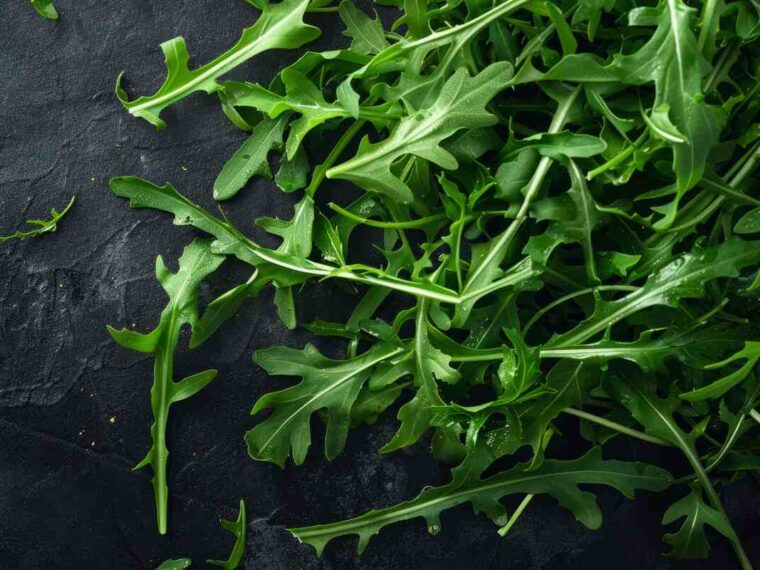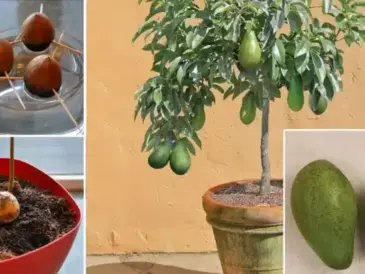Growing arugula inside your home can be a rewarding and tasty experience. Before diving into how to care for it, let’s explore some reasons why you might want to add this peppery green to your indoor garden.
Rapid Growth Means Quick Harvests
One of arugula’s biggest perks is how fast it grows. In as little as 20 days, you could be picking fresh leaves from your plant! Even if it takes a bit longer—around 30 days—you’re still looking at multiple harvests each year. That means you get to enjoy fresh arugula more often than with many other plants.
Harvesting is a Breeze
You don’t need any special tools or skills to harvest arugula. When the leaves are ready, simply snip off what you want, give them a quick rinse, and enjoy. We’ll get into more details on harvesting later.
Perfect for Any Space
Whether you have a small windowsill or a roomy indoor garden, arugula can fit right in. It grows well in compact containers as well as larger pots. Your available space will mostly affect how much you can grow, not whether you can grow it.
Choose from Different Tasty Varieties
Arugula comes in several delicious types, each with unique flavors and looks. Here are a few favorites:
- Astro: A speedy grower that handles heat well and keeps its flavor longer.
- Rocket: A popular variety with a milder taste.
- Red Dragon: Known for its beautiful red-veined leaves, adding visual flair.
No matter which variety you pick, the care tips below will mostly apply with only small tweaks.
Setting Up Your Arugula Garden
Containers and Soil
Pick a container that’s at least 6 inches deep and wide enough for your planting goals. Since arugula roots don’t grow very deep, depth isn’t a big deal. But a wider pot means more plants and a bigger harvest. I recommend a container about 12 inches in diameter if you want a generous crop, but smaller ones work fine too.
Drainage holes are a must — they prevent water from pooling and causing root rot.
For soil, any good-quality potting mix will do. Vegetable-specific soils aren’t necessary and often cost more. Just make sure the soil drains well.
Planting Seeds and Seedlings
If you’re starting from seeds, sow them about ¼ inch deep in moist soil. Scatter them generously — you’ll thin them out once they sprout. Arugula seeds need some light to germinate, so don’t cover them too thickly. Keep the container in a warm spot with good sunlight.
Seeds usually sprout in 7 to 10 days. Once seedlings reach 1 to 2 inches tall, thin them so there’s about 1 to 2 inches between each plant. This gives them room to grow strong.
If you prefer seedlings, just plant them about 2 inches apart in your pot. This way, you can get multiple plants growing together, maximizing your harvest.
Light, Temperature, and Location
Give Your Arugula the Right Light
Arugula thrives with 4 to 6 hours of bright but indirect sunlight daily. Too much direct sun can scorch its tender leaves, turning them yellow or brown. Aim for morning or evening sun with some afternoon shade. If natural light is limited, grow lights can boost your plant’s health and keep it producing longer.
Proper lighting helps delay bolting — that’s when your plant bolts tall and goes bitter, which we’ll explain soon.
Keep the Temperature Comfortable
Ideal indoor temperatures for arugula hover between 60°F and 70°F. It can tolerate slight fluctuations but avoid extreme swings.
If it gets too warm, your arugula may bolt quickly, leading to bitter leaves that aren’t great for eating. Too cold, and your plant’s growth slows down, and frost can kill it outright. Keeping a stable temperature helps keep your arugula happy and flavorful.
Watering and Feeding Your Arugula
Watering Basics
Since arugula has shallow roots, it needs consistent moisture. Check your soil regularly by poking your finger about an inch deep. If it feels dry, it’s time to water. Water until you see some draining from the pot’s holes, signaling the soil is fully saturated. Avoid letting your plant sit in soggy soil, as this can cause root problems.
Water frequency can vary—generally every 2 to 5 days depending on how warm your environment is.
Feeding Your Plants
Fertilize your arugula once a month during the growing season using a balanced, all-purpose fertilizer. Alternatively, sprinkle some used coffee grounds into the soil. Their nitrogen content supports leafy growth and is an affordable, natural option.
Harvesting and Pruning Tips
When and How to Harvest
Once your arugula leaves reach 4 to 6 inches tall—usually about 30 days after planting—it’s harvest time! Instead of cutting the entire plant, snip off the larger outer leaves at the base, leaving the smaller inner leaves to continue growing. Avoid taking more than one-third of the leaves at a time to keep your plant healthy.
If you harvest carefully, you can pick fresh leaves every 1 to 2 weeks.
Keep Your Plant Healthy
While harvesting, watch for any yellowing or dying leaves and prune them away. Removing these helps prevent pests and disease, and encourages your plant to keep producing tasty greens.
Regular pruning and harvesting also help delay bolting, extending your plant’s productive life.
Wrapping Up: Why Arugula is a Great Indoor Plant
Arugula grows fast, tastes fantastic, and doesn’t demand much fuss—making it an excellent choice for indoor gardening. Its peppery flavor adds a fresh zing to salads and many dishes. Plus, nothing beats the taste of arugula you’ve just picked yourself.
Got questions? I’m here to help you grow the indoor garden you’ve been dreaming about.
Quick FAQ
Will my arugula regrow after harvesting?
Yes! If you harvest carefully, your arugula will keep regrowing, giving you fresh leaves throughout the season.
What plants grow well alongside arugula?
Leafy greens like lettuce and kale make great companions since they share similar light and water needs.
How often should I water my arugula?
It depends on your indoor climate. Warmer spots need more frequent watering (every couple of days), while cooler areas might only require watering once a week.
Ready to Start Growing?
Now that you know how simple and rewarding growing arugula indoors can be, why not give it a try? Grab some seeds or seedlings, find a cozy sunny spot, and enjoy fresh, homegrown greens all year long.
If you found these tips helpful, share this guide with fellow garden lovers and drop your questions or experiences in the comments. Let’s grow something great together!




